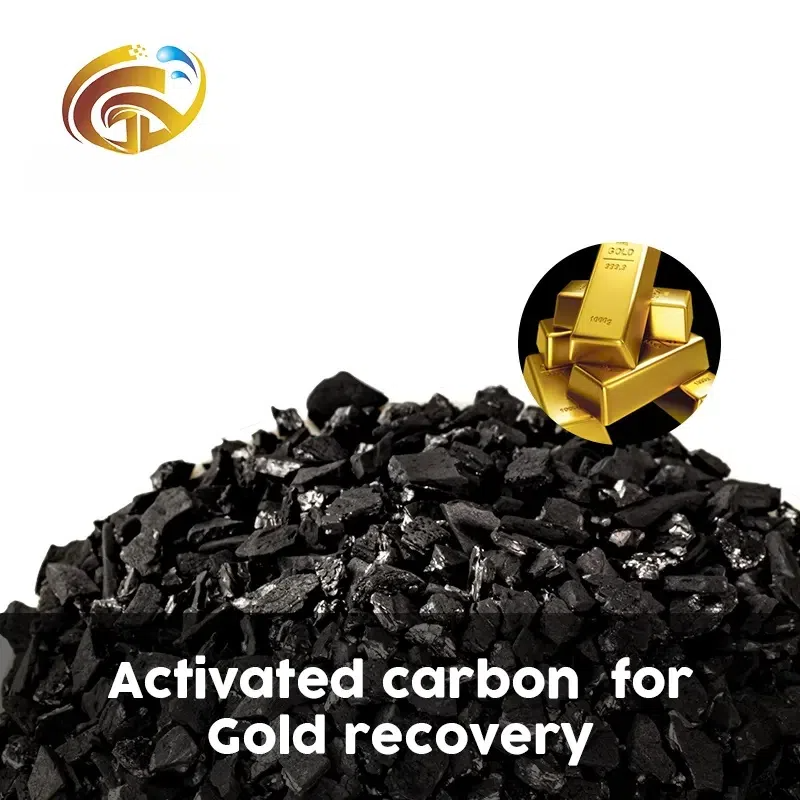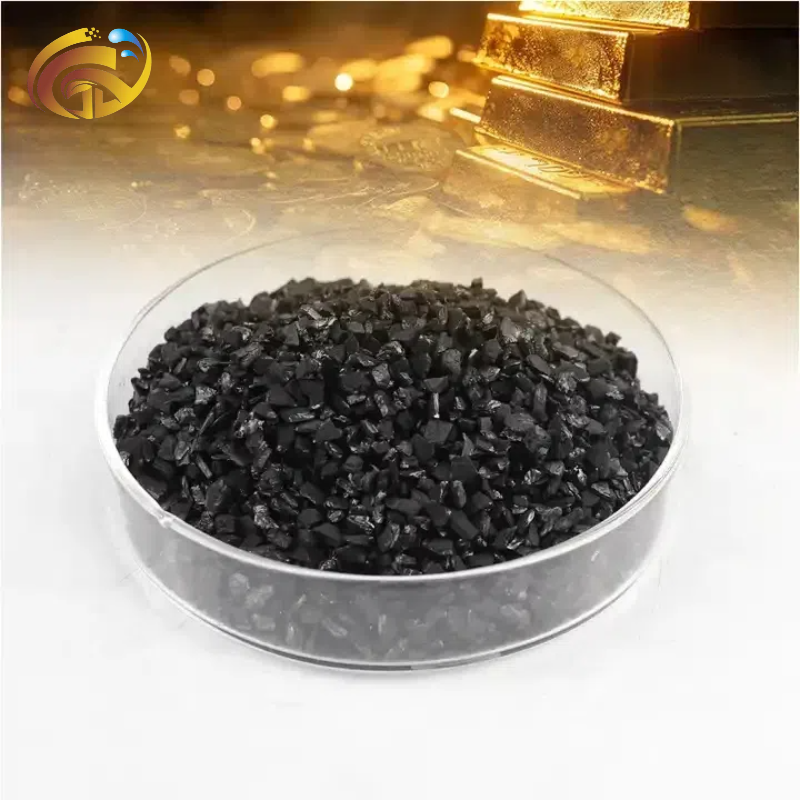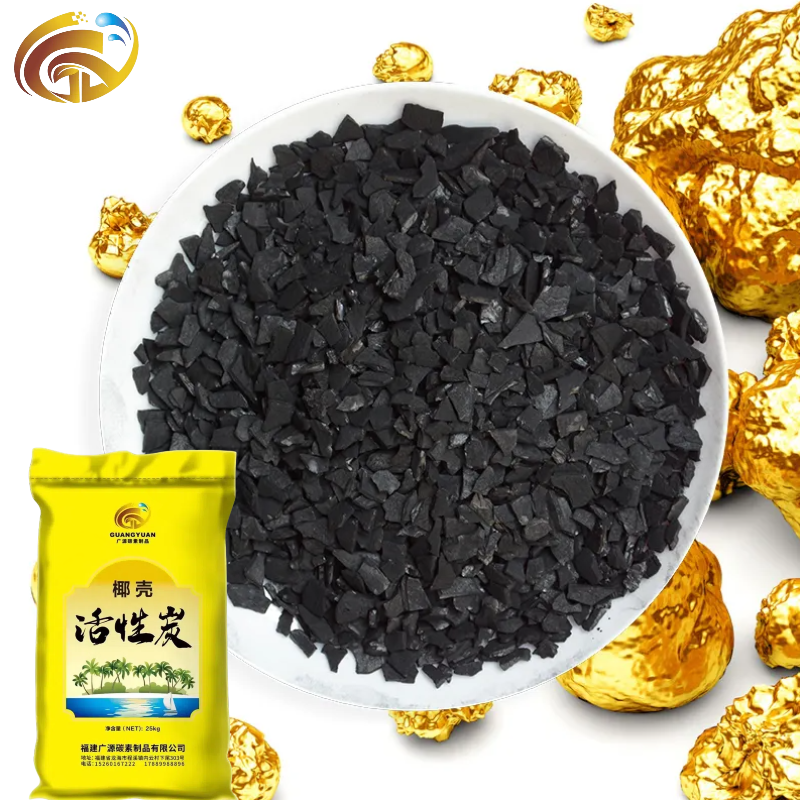How to choose coconut shell activated carbon in gold refining and processing industry
In the gold refining and processing industry, coconut shell activated carbon has become an indispensable adsorption material due to its unique physical and chemical properties. Its excellent adsorption performance can not only effectively capture trace gold in the solution, but also maintain stable operating efficiency in complex environments. It is a key link in improving gold recovery rate and economy.
For gold adsorption, coconut shell activated carbons with 6-12 mesh and 5-10 mesh sizes are the most commonly used. These two sizes have larger particles and higher mechanical strength, which helps maintain particle integrity when treating gold-containing solutions and reduces the loss of adsorption capacity due to wear and breakage. Furthermore, while larger particles have a smaller surface area than smaller particles, their more developed internal pore structure facilitates deeper adsorption of precious metals like gold, thereby improving adsorption efficiency.
Generally speaking, coconut shell activated carbon with an iodine value of 1000 is considered the preferred material for gold adsorption due to its combined strength, ash content, and adsorption capacity. This high iodine value not only possesses a strong adsorption capacity, enabling rapid adsorption of gold ions from solution, but its low ash content also reduces the impact of impurities on gold purity. Furthermore, its high strength ensures that the activated carbon is resistant to breakage during use, minimizing the loss of adsorption efficiency caused by particle breakage. Therefore, choosing coconut shell activated carbon with an iodine value of 1000 for gold adsorption projects ensures efficient adsorption while balancing economic benefits and operational stability.
For the gold refining industry, selecting coconut shell activated carbon with high compressive strength is particularly important, as it maintains stable adsorption capacity even under harsh industrial conditions, reducing the need for frequent activated carbon replacement and improving the continuity and efficiency of the overall production process. Furthermore, the regeneration performance of coconut shell activated carbon should also be considered. After reaching saturation in gold adsorption, regeneration of the activated carbon is a key step in restoring its adsorption capacity and enabling recycling. High-quality coconut shell activated carbon should exhibit excellent regeneration properties, meaning that after appropriate pyrolysis or chemical treatment, it can regain high adsorption efficiency, thereby reducing resource consumption and environmental impact.
In summary, in the gold refining and processing industry, the scientific and rational selection of coconut shell activated carbon requires comprehensive consideration of multiple aspects such as specification selection, iodine value consideration, strength assessment and regeneration performance.
Through careful selection and rational configuration, Guangyuan Carbon maximizes the role of coconut shell activated carbon in the gold adsorption process, improving gold recovery while reducing production costs, achieving a win-win situation for both economic benefits and environmental protection. With the continuous advancement of technology and the increasing maturity of the market, we believe that the application of coconut shell activated carbon in gold refining and processing will become more extensive and in-depth.



· Fujian Guangyuan Carbon Products Co.,Ltd.
